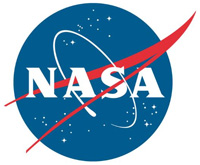Written by DC Agle
NASA’s Jet Propulsion Laboratory
 Pasadena, CA – NASA’s twin, lunar-orbiting Gravity Recovery and Interior Laboratory (GRAIL) spacecraft began data collection for the start of the mission’s extended operations.
Pasadena, CA – NASA’s twin, lunar-orbiting Gravity Recovery and Interior Laboratory (GRAIL) spacecraft began data collection for the start of the mission’s extended operations.
At 9:28am PDT (12:28pm EDT) yesterday, while the two spacecraft were 19 miles (30 kilometers) above the moon’s Ocean of Storms, the Lunar Gravity Ranging System — the mission’s sole science instrument aboard both GRAIL twins — was energized.

The science phase of GRAIL’s extended mission runs from August 30th to December 3rd. Its goals are to take an even closer look at the moon’s gravity field, deriving the gravitational influence of surface and subsurface features as small as simple craters, mountains and rilles. To achieve this unprecedented resolution, GRAIL mission planners are halving the operating altitude – flying at the lowest altitude that can be safely maintained.
During the prime mission, which stretched from March 1st to May 29th, the two GRAIL spacecraft, named Ebb and Flow, orbited at an average altitude of 34 miles (55 kilometers). The average orbital altitude during extended mission will be 14 miles (23 kilometers), which places the GRAIL twins within five miles (eight kilometers) of some of the moon’s higher surface features.
“Ebb and Flow, and our mission operations team, are both doing great, which is certainly notable considering all the milestones and challenges they have experienced,” said David Lehman, GRAIL project manager from NASA’s Jet Propulsion Laboratory in Pasadena, CA. “The twins have endured the lunar eclipse of June 4th, 2012, and 26 rocket burns since arriving in lunar orbit at the beginning of the year. Down here in our control room, with all the planning and mission operations we have been doing, it feels as though we’ve been riding right along with them. Of course, they have the better view.”
Science data are collected when the Lunar Gravity Ranging System transmit radio signals between the two spacecraft, precisely defining the rate of change of distance between Ebb and Flow. The distance between the twins change slightly as they fly over areas of greater and lesser gravity caused by visible features, such as mountains and craters, and by masses hidden beneath the lunar surface.Mission scientists calculated that even as the last data were downlinked, four of the mission’s six principal science measurement goals had already been achieved. The objective of the GRAIL mission is to generate the most accurate gravity map of the moon and from that derive the internal structure and evolution of Earth’s natural satellite.
JPL manages the GRAIL mission for NASA’s Science Mission Directorate in Washington. The GRAIL mission is part of the Discovery Program managed at NASA’s Marshall Space Flight Center in Huntsville, AL. Lockheed Martin Space Systems in Denver built the spacecraft.
For more information about GRAIL, visit: http://solarsystem.nasa.gov/grail/


